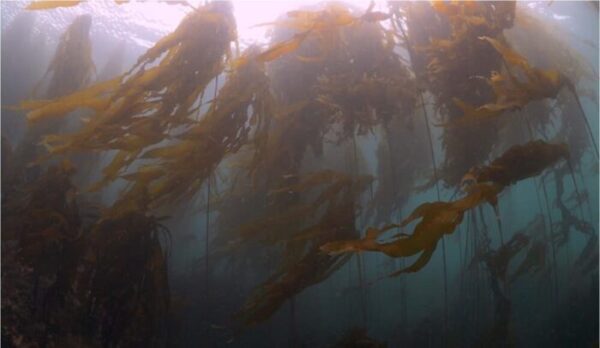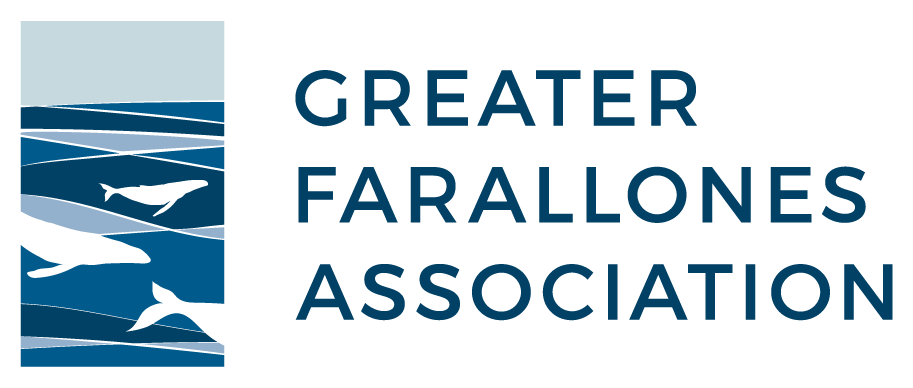Kelp and Climate: Can Restoring Undersea Forests Enhance Resilience for the Coast?


We are thrilled to receive grant funding from the National Fish and Wildlife Foundation (NFWF) to conduct a study investigating the climate benefits of restoring kelp forests. As we begin our large-scale effort to restore bull kelp forest in Greater Farallones National Marine Sanctuary alongside the Sanctuary, state, and many partners, we will now have the unique opportunity to learn about the potential capacity of kelp to reduce climate impacts like storm surge and coastal erosion.
Over 90% of bull kelp forests along the Sonoma County, California coastline have been lost due to climate-linked warm water events and urchin population increase. Extensive regional loss of bull kelp has persisted for a decade, resulting in the collapse of recreational and commercial fisheries and devastating ecological impacts for invertebrates, fish and other animals that rely on kelp forest habitat. Restoring this important ecosystem is a top priority for us at Greater Farallones Association as we work with the Sanctuary to bring it back to a more balanced state. Our efforts are focused at four key sites in the Sanctuary that through years of comprehensive research have been identified as the most ideal for restoration. Through this project, we are working with local commercial divers to reduce purple urchin populations that have proliferated in recent years. Even though the purple urchin is a native species with a natural place in the ecosystem, they eat kelp so if there are abnormally high numbers of them, they eat through kelp faster than it can grow. During the project, we will closely monitor those urchin populations, replenish kelp spores in areas cleared of urchins through outplanting and monitoring, and evaluate connectivity between restoration sites and natural recovery areas.
Now, with support from NFWF, we will also study how kelp forest has remained resilient in the past and how restoring it now may help make it more resilient to current and future climate change impacts. We will also work to learn more about how kelp forests may help buffer impacts from climate change like coastal erosion and storm surge. This work will be completed in partnership with the Sanctuary, California Department of Fish and Wildlife, Stanford University, Scripps Institution of Oceanography, Woods Hole Oceanographic Institution, Fort Ross Conservancy, and local commercial urchin divers. Alongside these partners, we will conduct habitat and kelp canopy surveys and correlate them with environmental and climate change-related factors using sensors for dissolved oxygen, temperature, salinity, and pH; and hydrodynamics research to understand how restored bull kelp may play a role in decreasing wave energy and redirecting nearshore currents. These data will be provided to Sanctuary and other agency partners to provide insights for management decisions.
Learn more about the Greater Farallones Kelp Restoration Project.
Follow on social media for updates as this project gets underway:
Greater Farallones Association: Facebook, Twitter, Instagram.
Greater Farallones and Cordell Bank National Marine Sanctuaries: Facebook, Twitter.
Read more about the National Coastal Resilience Fund.
Photo credit: Paul Chetirkin, NOAA

